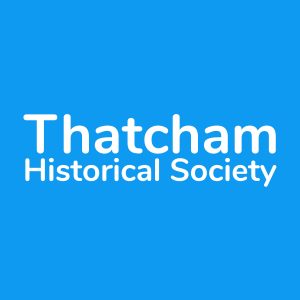History of Thatcham
These pages detail the history of Thatcham. We hope to expand this with additional pages and history as time permits.
Prehistoric Settlement
The first known human settlement in the area occurred about ten thousand years ago during the Mesolithic Period, when a village of light temporary shelters was erected on a pine covered gravel bluff near the modern sewage works on Lower Way Lane.
The villagers, who were semi nomadic hunters and fishers, occupied the site periodically for at least three centuries, but about 7500 BC the area was flooded and covered with layers of peat and marl, perfectly preserving many of the relics buried beneath
The Roman Occupation
During the second or third century AD there is evidence of settlement in the area of Henwick Lane and Roman Way. Excavations of the site were carried out nearly with foundations of buildings; pottery, tiles, household implements and coins being unearthed.
The Saxons
It is supposed that at this time a Saxon chief called Tace, or possibly Tac or Tec, led his men up the navigable rivers Thames and Kennet as far as the ruined roman bridge. Here they probably disembarked and move some distance to the northwest where they erected a large village which they called Taceham (the village of tace) on the site of the modern centre of Thatcham. Some local historians have alternative theories too.
The Saxon village probably consisted of a collection of huts of wood or wattle and daub, roofed with thatch, the whole settlement being enclosed within a palisade fence. The inhabitants settled down to become a peaceful farming community and the village prospered, eventually being incorporated into the Saxon kingdom of Wessex.
Domesday
Thatcham is described in the Domesday survey as having thirty-five virgates and twelve borders, with sufficient arable land for twenty-five ploughs. In addition there were two mills, one hundred and forty seven acres of meadow (pasture) and a wood giving pannage for sixty pigs. There was a church and two clergymen, and twelve hagae (the houses or closes of townsmen). The total value of the manor was assessed at £34 per annum, a very considerable sum in those days.
References
- Proser, A. W., Thatcham through the ages, Occasional Paper Number 2, Thatcham Historical Society: Thatcham, 1979
